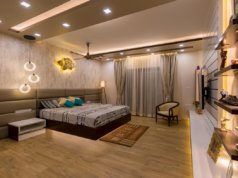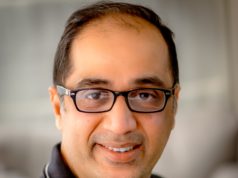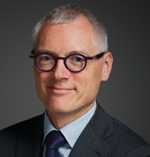
Managing Director
Libert Paints
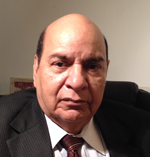
Chairman
Pulse Exim
Corrosion costs the Indian economy a whopping $40 billion every year. Belgian paint specialist Libert Paints strongly believes that fighting corrosion begins with proper education. The company last year joined hands with Pulse Exim Trading Pvt. Ltd, a part of the New Delhi-based SDPR Group, for distribution of its industrial and building paints in India. Sven Ghyselinck, Managing Director, Libert Paints, and Som Chaturvedi, Chairman, Pulse Exim, spoke to Debdeep Chakraborty about why fighting corrosion needs to be the top most priority for infrastructure developers in India and also how they propose to move ahead in that direction.
India has drawn up plans to invest $1 trillion on infrastructure development during the period 2012-17. Considering that corrosion costs the country’s economy $40 billion every year, how difficult, in your view, will be the task of fighting corrosion?
Sven Ghyselinck: It will not be easy. If it was easy, corrosion would not be costing the Indian economy 4 per cent of GDP. The difficulty that India faces in this respect is in changing the mindset. From a technical viewpoint, corrosion can be brought down to a much lower level fairly quickly within five to 10 years time from where it is today provided people are willing to change their mindset. That will be a crucial element in the whole process.We meet customers from various sectors, including oil and gas and power, and we find that the plants, factories and metal structures are in deplorable state. It happens because of climatological reasons since the location of these plants and factories are in and around coastal regions and also due to the activities the plants undertake. These conditions are given and will not change. However, what we see in most cases is that the plants and factories are in deplorable condition because they were not maintained well enough or in the right way. We think that this part should change and we are willing to help carry out that change. The customers we are talking to are well aware that they cannot continue to work like they did in the past by either not maintaining or maintaining in an improper way because then it simply comes down to repainting every year, shutting down the plant every year, losing money every year, and investing not only on paint but also on labour, equipment etc. every year. That is not the way forward.
Many companies come to us and say that they have tried everything with the existing normal paints and solutions available in India. They then ask for our help because they don’t want to redo the maintenance, painting or reconstruction for a period of five to 10 years or longer. Since we have the knowledge, the products, and the expertise, we identify the problem for the customer and then tell him how it can be remedied with our products and solutions. We first communicate with the top management as well as the engineering department.
Later, at the actual implementation stage, we train the application people who can be either the customer’s own people or subcontracted. We demonstrate how to eliminate rust before beginning the painting process and then explain how to paint and what tools to use. In some cases, we have noticed that people who are supposed to do the work do not possess the right tools. When the right tools are missing, no matter how good the paint is, the end result will not be achieved. So, following identification of the problem and after conveying to the customer how it can be remedied conceptually and engineering wise, we supply the products. If the necessary tools are lacking with the customer, we supply them, and then we train the people.
Afterwards, people from Pulse Exim supervise the execution of the entire project. This ensures that the customer’s plant is protected for a prolonged period of time. Ordinary paints require repainting every year or every two years. This means that the plant has to be shut down and the labour sits idle. During the painting process, the old paint first has to be cleaned followed by application of the new paint. Drying of the paint also takes time. The repainting process, as a result, leads to significant production loss.
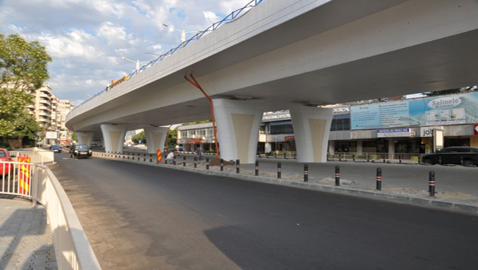
Photo: www.libertpaints.com
When we talk about corrosion, shouldn’t the focus be on prevention rather than cure?
Sven Ghyselinck: Yes, absolutely. In a situation where a new plant is being built, it is very important to put in place the right painting systems and also ensure that they are maintained properly. The unfortunate part is that in India, many of the existing plants, be it in any sector, are in such bad shape that prevention is no more possible. The corrosion in these plants has to be cured and that too significantly. There are a large number of businesses in India, both in the government and private sector, which require severe curative treatment.
Som Chaturvedi: In India, the emphasis is on how economically a project can be done. People, therefore, try and avoid those costs that can be avoided in order to bring down the total cost. This applies to both public and private sector. The issue here is to make people realise that avoiding certain costs in the beginning can prove to be very expensive in the long run.
You have said that fighting corrosion starts with proper education. In your opinion, is there a lack of awareness among infrastructure developers in India about the effects of corrosion and how to prevent them?
Som Chaturvedi: The mindset in India is why go for expensive paints when ordinary paints are available. People don’t realise the expensive ones work out much cheaper in the long run when the total cost is worked out. A plant where ordinary paint has been used needs to be shut down every year or every two years for repainting. During the period of shutdown, there is loss of production and the labour sits idle. Now, the right product may be twice the cost of ordinary paint. However, when you take into account the cost of the shutdown, say, over a period of 10 years, using the right product will work out to be much cheaper. Our efforts go into making people realise this fact.
Another equally important aspect is that neglecting corrosion can lead to accidents and loss of lives. Usage of the right solutions can help prevent accidents.
Sven Ghyselinck: Let me give a broader Asian perspective. We have a good, solid base in the Philippines right now. Certain parts of India are very similar to Philippines. In the Philippines, customers ask us for a system that will ensure protection for 10 to 15 years right at the time of setting up a new plant. Also, when they have an issue, they immediately contact us and ask us to resolve it without any delay. They don’t wait till the structure is fully corroded. People in the Philippines have a completely different approach. They don’t consider inappropriate cheap products, not that they don’t have budgetary constraints. Their approach is based on a multi-year perspective because they realise that the opportunity costs of shutting down the plant or erecting scaffolding every one or two years over a period of 10 or 15 years is 10 or 15 times the cost of doing it correctly right from the beginning.
The approach adopted in the Philippines is very different from that adopted in India even though from a climatological and economical point of view there is fair amount of similarities between the two countries. India needs to make a fundamental change in the mindset. India like many countries in Southeast Asia faces a difficult climatological situation. However, there are technologies that cure corrosion and in case of new installations, prevent corrosion. It needs to start right from the beginning. Over time, loads of money can be saved by way of direct expenses or opportunity costs or opportunity profits. I don’t see why ultimately India can’t reduce the corrosion loss, which is 4 per cent of the GDP at present, to international standards. The country can easily free up to $10 billion a year.
Given India’s focus on developing new infrastructure and improving the existing ones in the coming period, how do you view the country’s market for anti-corrosion products and solutions?
Som Chaturvedi: We have met a few very large companies and they have shown interest in our products and solutions for their new infrastructure that they are going to build and not for the existing ones. There are other companies that we have met who want to use our products both in their existing infrastructure as well as the new ones. This means that people are gradually becoming aware with regard to the effects of corrosion.
In India, people adopt the approach of ‘seeing is believing’. When people see that we are successful in their existing infrastructure, they will engage us for their new ones too. So, while focusing on existing infrastructure, we need to reach out to the new ones. The awareness is growing gradually and it will pick up once we are successful with the existing infrastructures that are in bad condition.
Sven Ghyselinck: I hope that steps will be taken to prevent corrosion right from the time the construction of new infrastructure begins. As far as we are concerned, the biggest opportunity is in curative treatment. Every existing infrastructure cannot be replaced with a new one. The immediate need is to cure the already affected infrastructure. Almost any of the plants that we have seen here so far, parts of them face the risks of collapsing or exploding due to corrosion. They can cause casualties and loss of production which in turn will not only affect the companies but also the country. So, the curative part is definitely the immediate need.
At the same time, I am hoping that when new infrastructure is built, people will adopt proper ways for prevention of corrosion right from the beginning. Generally, the tendency of the companies is to first give us the most critically affected infrastructure and then ask for proof that our products and solutions will be helpful. Once we demonstrate success, they become convinced and give us other existing infrastructure for curative treatment and also engage us for their new infrastructure.
Could you please throw some light on your company’s portfolio of products and solutions for fighting as well as preventing corrosion?
Sven Ghyselinck: We have defined our market into three segments – industrial, hygienic and decorative. We do not promote the decorative segment in India.
The hygienic coating segment is targeted towards healthcare and the food sector. It includes laboratories, schools, kitchens, food processing facilities, hospitals, rehabilitation centres and children’s day care centres. At these places, the paint to be used either should be certified for food or ensure a chemically decontaminated environment. That is not possible with ordinary wall paints. The hygienic coating segment covers both floorings as well as walls. We have done our first trial with hygienic coatings sometime back and would like to further expand on the hygienic coating segment in India.
In the industrial coating segment, we have two types of solutions. One solution is particularly targeted towards infrastructure such as bridges, refineries, power plants and offshore equipment. In these cases, we propose the Moisture Curing Urethanes. These are coatings which cure with the help of humidity in the air. This is what we focus on as of today in India. Later, we envision focusing on our Direct to Substrate coatings. The DTS coatings are very versatile in nature and can be applied on steel, aluminum, plastic and mineral surfaces. They offer tremendous operational efficiency. The DTS is targeted towards the manufacturing sector.
Traditionally, protective coatings have been used for corrosion prevention. The life of these coatings, though, is dependent on surface preparation which requires removal of impurities including moisture. Does that pose a major challenge since large parts of India have dusty and humid conditions?
Sven Ghyselinck: It is easily doable provided a systematic approach is adopted and proper tools are used. With the projects that we have done for our customers here last year, we noticed that they sometimes lacked the structured expertise and the proper tools to prepare the surface well. As far as expertise is concerned, we can provide that. With tools, we can show, sometimes we can provide, and sometimes it is not possible for us to provide because it is an investment that the customer needs to make. Without the proper tools, we can come with the best paints in the world but the end result will not be achieved.
Corrosion is of two types – Inorganic which is rust and Organic which includes mould, mildew and fungi. Are your products capable of fighting organic types of corrosion as well?
Sven Ghyselinck: Mould, mildew and fungi have to do with the hygienic aspect. For treating such types, we have the hygienic coatings and coatings for decontamination. These coatings have strong anti-bacterial functionalities. They prevent bacteria from growing. In a bakery or brewery, for example, coatings that provide protection from mould, mildew or fungi are required. Our hygienic coatings provide exactly that kind of protection.
Your company has developed products based on Moisture Curing Urethanes or MCU. How will it benefit infrastructure developers in India?
Sven Ghyselinck: For MCU to work, humidity needs to be minimum 30 per cent. Below 30 per cent, it won’t work. So, in summer, in deserts, it won’t work. Near the coasts, it will work almost the entire year. In other parts of India, it can be applied 80 per cent of the year. It can be applied in temperature ranging from 0°C to 40°C. So, MCU can be used from the Himalayas to Kerala, maybe not the entire year but 80 per cent of the year. The advantage of MCU or one component paint is that no mixing is needed. So, the painter cannot commit mistakes in mixing. As we know, MCU when applied cures with humidity. It can be used in a very safe manner even in difficult and complex structures and still the same functionality will be achieved.
Your company last year entered into a partnership with Pulse Exim for distribution of paints in India. How will it help strengthen your presence in the country?
Sven Ghyselinck: As a company we have a very customer centered approach. It means that we have to rely on the right partner wherever we are. Our partners need to share our high quality ambition as well as high service willingness and commitment to customers. We always face the challenge of finding the right partner who shares our ambition of fighting corrosion in a high quality manner with a customer centered and service oriented approach.
In India, we were very fortunate to find Pulse Exim. Ours is an ideal combination, not only in terms of technical expertise, but also because both our companies are customer centered, service-oriented and share the same goal of doing high quality work. It is a very rare find. We have partners with whom we are working for 35 years in other parts of the world. Here too, we are convinced this partnership will continue for a very long period.
Som Chaturvedi: While Libert Paints was looking for the right partner in India, we were searching for a company that had the right solutions for Indian conditions. As luck would have it, the products and solutions offered by Libert were perfect for India. This partnership has an edge over others due to technical superiority as well as our ability to sell the concept. At present, we are focusing on power and petrochemical sectors. We are also trying to reach out to the rail and road sectors. Gradually, we will move to other sectors.
Do you have any plans to set up manufacturing facilities in India to take advantage of the growth opportunities that exist in the anti-corrosion segment?
Sven Ghyselinck: As a European company we are at this point of time very pleased but at the same time curious and little sceptical about the ‘Make in India’ story. It would create tremendous opportunity for us to further grow in India and we may also envision making it in India. It is a step by step approach in this regard. In the first step we are looking at setting up a technical expertise centre here together with Pulse Exim. We would like to set it up next year. The second part will involve setting up a logistical centre and a sort of semi-manufacturing centre. The third part will include real manufacturing.
We make a distinction between semi-manufacturing and manufacturing due to certain reasons. Firstly, we get very good end results because we have consistent access to very high quality raw materials in Europe. I am not sure we will have the same kind of consistent access to high quality raw materials in India. We need to consistently maintain the high quality of our products and solutions for our customers and that is dependent on the quality of raw materials. And secondly, as a foreign company looking at investing in a country like India, we have to be first sure that operating would be as smooth as it is in Europe.
At this time, I am not convinced that is the case. There are still a lot of administrative hurdles here. I am very pleased to read that the Indian Prime Minister has been emphasising on the need to simplify and modify rules and regulations for making in India but I would like to first see the changes taking place on the ground.






